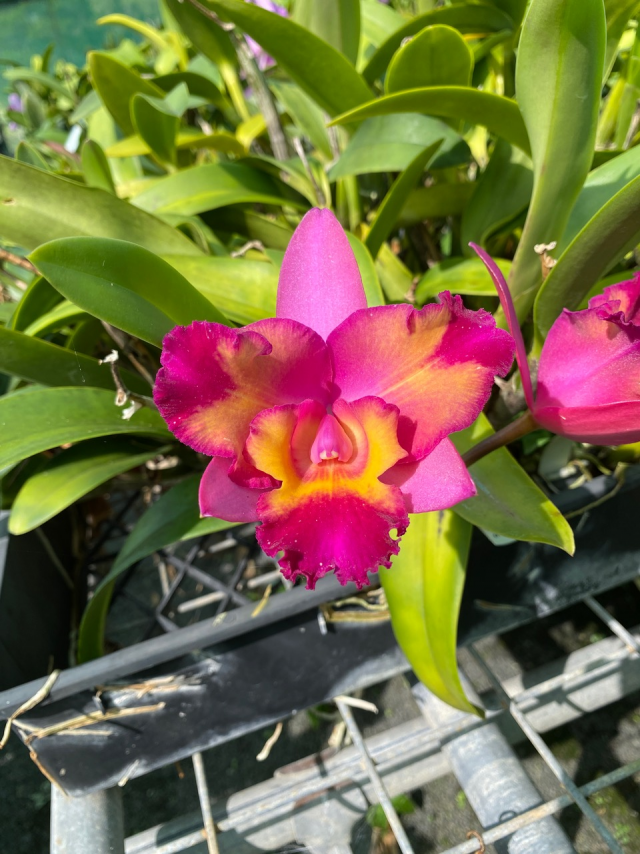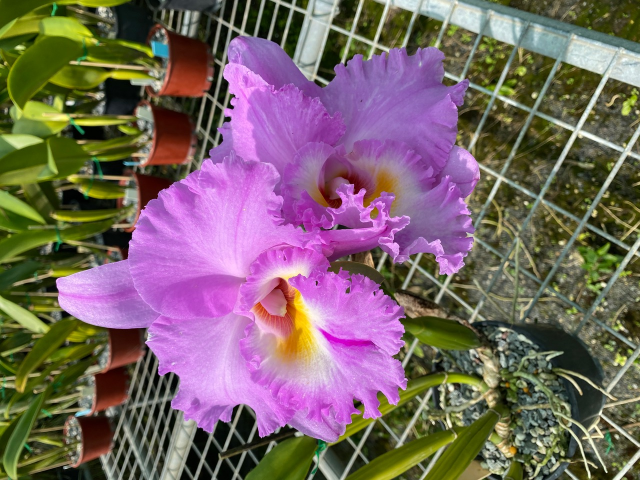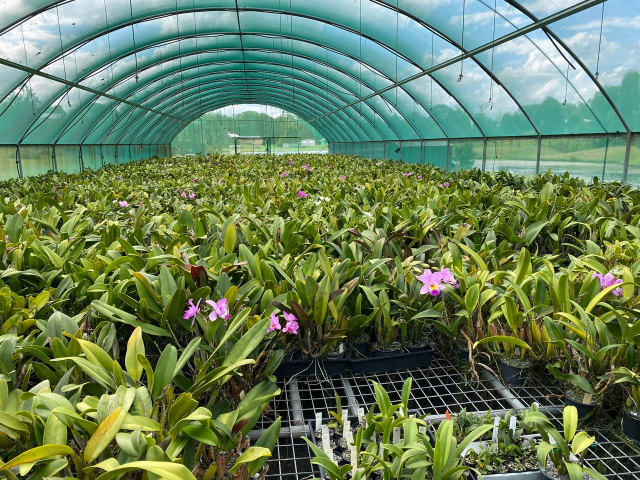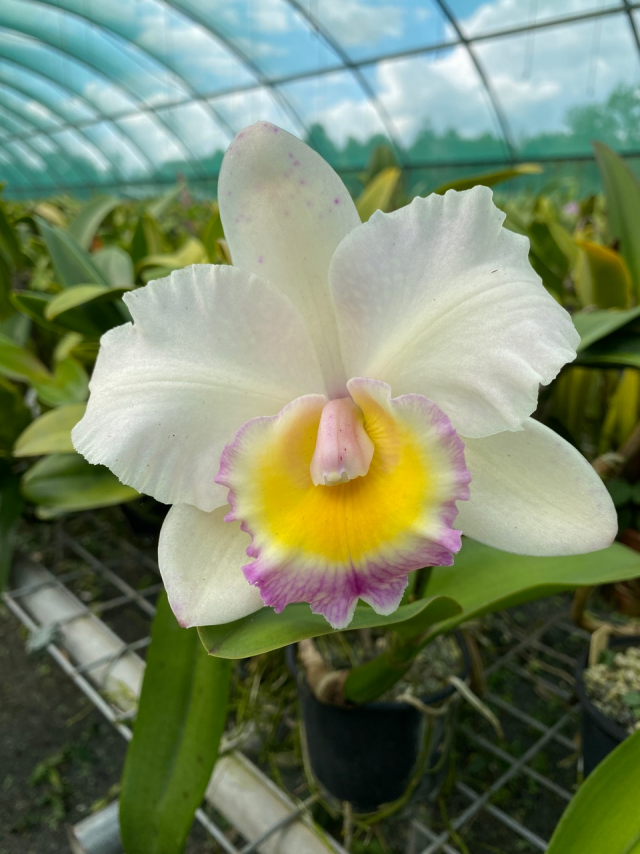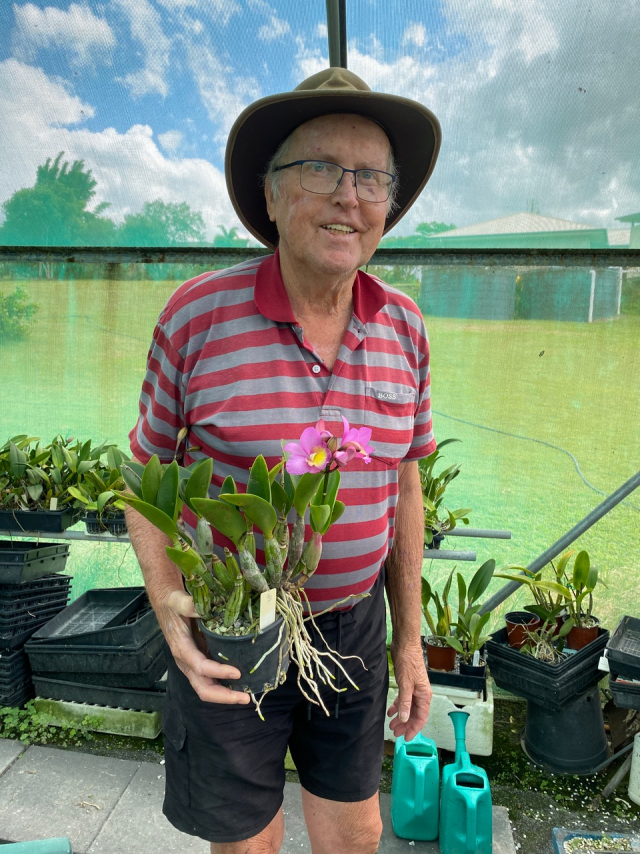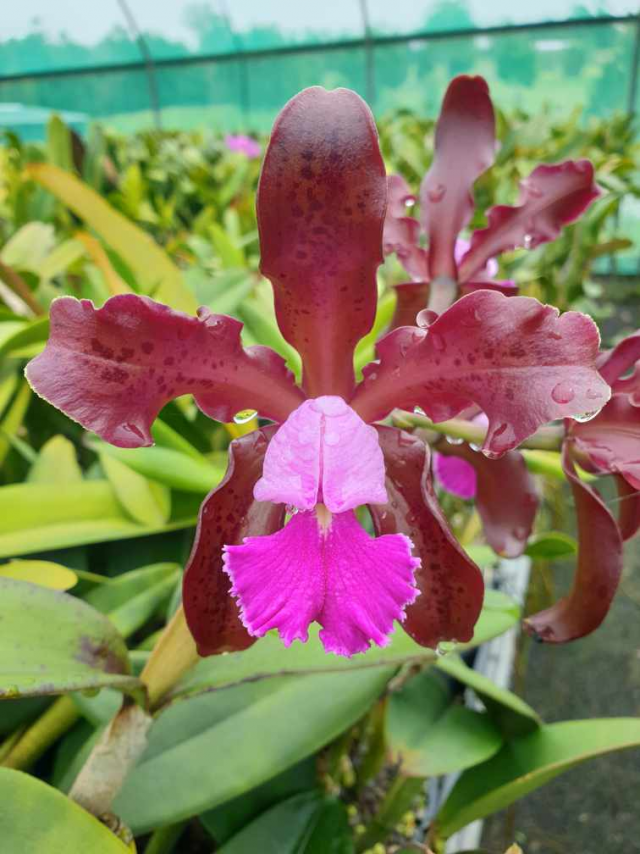Jim Evans has years of experience and valuable information for an aspiring orchid grower.
Jim and Leanne Evans have spent years developing their expertise and travelling the world to see orchids.
They tell the story of seeing a commercial orchid grower in Taiwan, growing three million Phalaenopsis orchids a year.
Jim, assisted by Leanne Evans, has a strict regime of care for his orchids.
He fertilises the orchids once a week, through the irrigation system.
He uses a balanced NPK fertiliser, something like 20 nitrogen, 6-8 phosphorus and 16 potassium (potash).
The goal of fertilising is to keep the plant healthy and healthy plants flower well.
Jim recommends that home gardeners use Australian-owned Manutec which can be used year around.
Growers have to watch out for pests and diseases.
Orchid Scale is a white cluster of mites at the base of a leaf. They can be suffocated by using Pest Oil but the oil should not be used in hot weather.
General purpose fungicides such as Mancozeb will keep diseases such as Black Spot at bay.
Jim grows only Cattleya orchids so doesn’t have to worry about orange and black Dendrobium Beetles. Unfortunately the common and usually unfussy Crucifix Orchid is a host for this beetle.
Jim says the only successful eradication program for Dendrobium Beetle is ‘two bricks’ if you can catch them.
Orchids are epiphytes so don’t need soil to grow.
Jim plants his orchids in perlite and coco peat (ground up fibre from inside a coconut husk). Perlite is a silica product, and is ph neutral and sterile.
Coco peat has anti-fungal properties. It should not be confused with Peat Moss.
Jim puts a handful of blue metal chips on top of his orchids. Like all good garden tips, the reason is surprising.
No secret nutrients leaching out; no aesthetic value; just that the blue metal weighs down the perlite which is prone to being blown away.
Hygiene is vital if you have a large collection or orchids. Cutters and equipment should be sterilised by using chemicals or heat.
Jim’s orchids need about 70% shade and enjoy a good dose of rain water.
Too much water is undesirable but well-drained pots on wire benches usually deal with over-watering.
Jim’s huge mesh benches are on a roller system so he doesn’t waste space for walkways between each bench. It’s a bit like a compactus on steroids.
Jim’s huge shade houses have to protected from frost so he puts a Solarweave transparent plastic cover over the green shade cloth during winter.
Caring for such a huge collection of orchids is a full-time job. Jim and Leanne work on cleaning and repotting orchids every day.
When trays of potted orchids are left to grow, they end up intertwining their roots, scrambling over each other’s pots.
In nature, they would scramble over each other and their host’s branches to attach to the surface and send out roots which absorb nutrients from rotting leaves and other organic matter that falls around them.
Jim and Leanne spend hours cleaning up their orchids, removing old leaves and pruning roots before repotting.
Cattleyas belong to a big family of orchids which can be cross-bred. Keeping track of the hybrids is important for breeding.
Successful hybrids (of many plants, not just orchids) are often better plants than their parents. Some hybrids are less fussy about their growing conditions and can survive neglect and poor conditions.
Cattleya hybrids are tracked by combined names (which we haven’t printed here) and abbreviations which are commonly used on labels.
Cattleya x Brassavola, abbreviated Bc; Brassavola x Laelia, abbreviated Bl; Brassavola x Laelia x Cattleya, abbreviated Blc; Brassavola x Laelia x Cattleya x Diacrium, abbreviated Iwan; Laelia x Cattleya, abbreviated Lc; Brassavola x Laelia x Cattleya x Sophronitis, abbreviated Pot; Cattleya x Sophronitis, abbreviated Sc; Sophronitis x Laelia, abbreviated Sl; Sophronitis x Laelia x Cattleya, abbreviated Slc.

